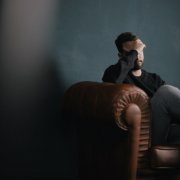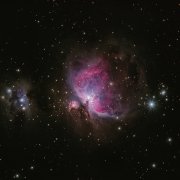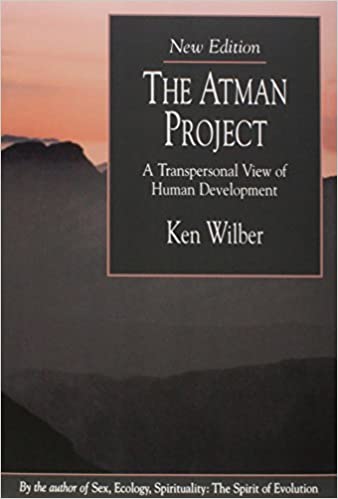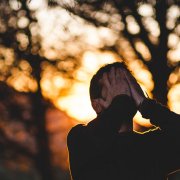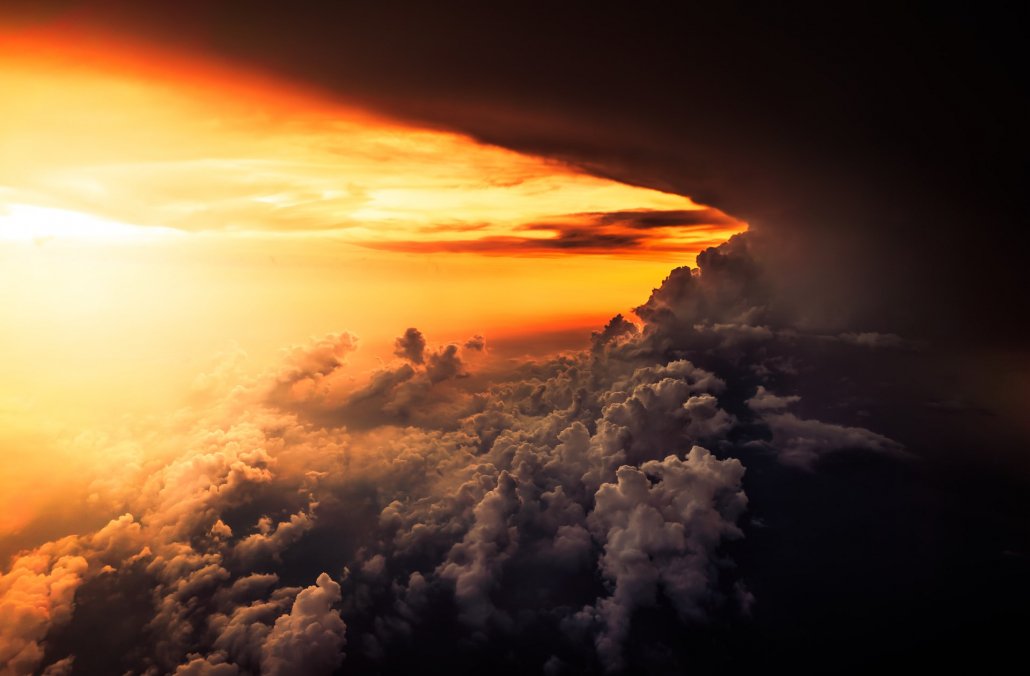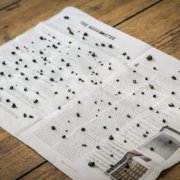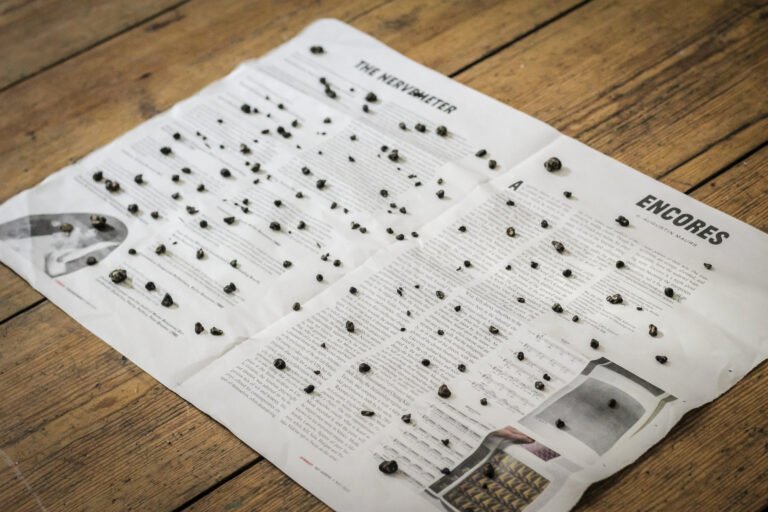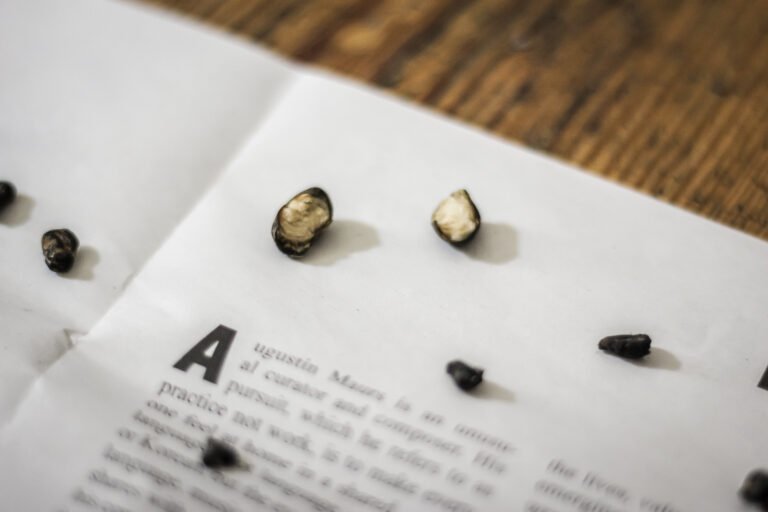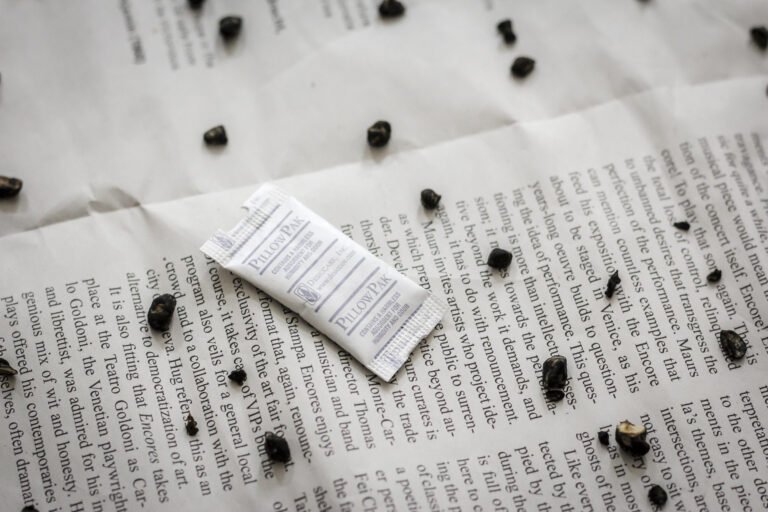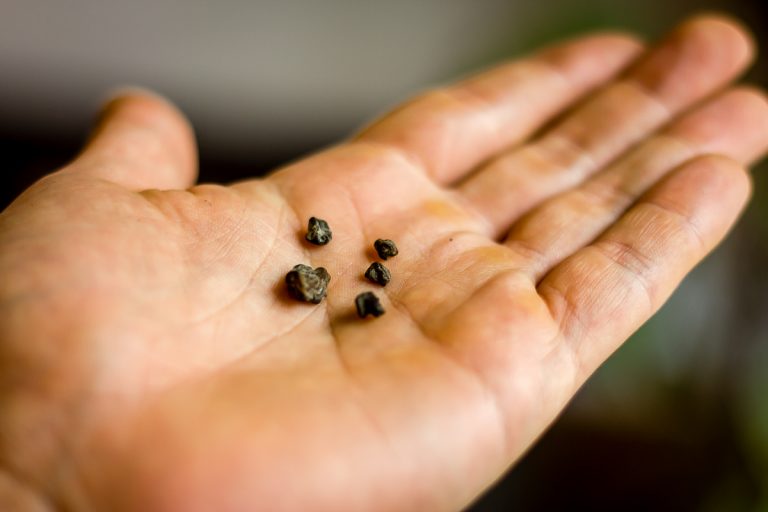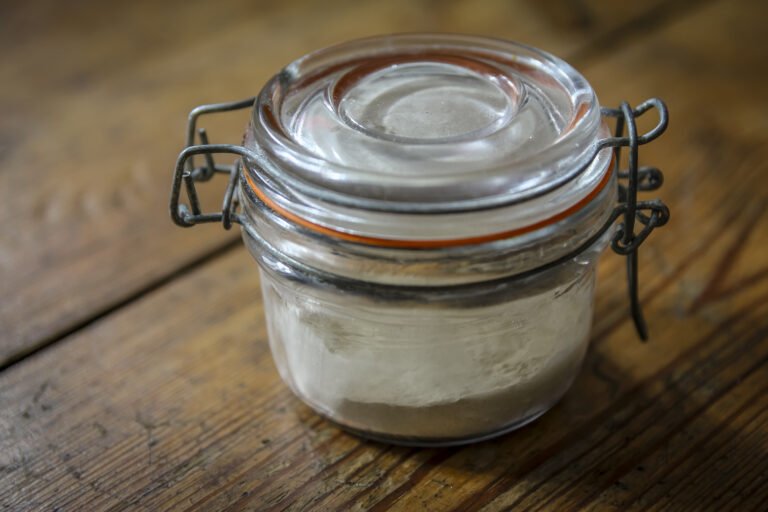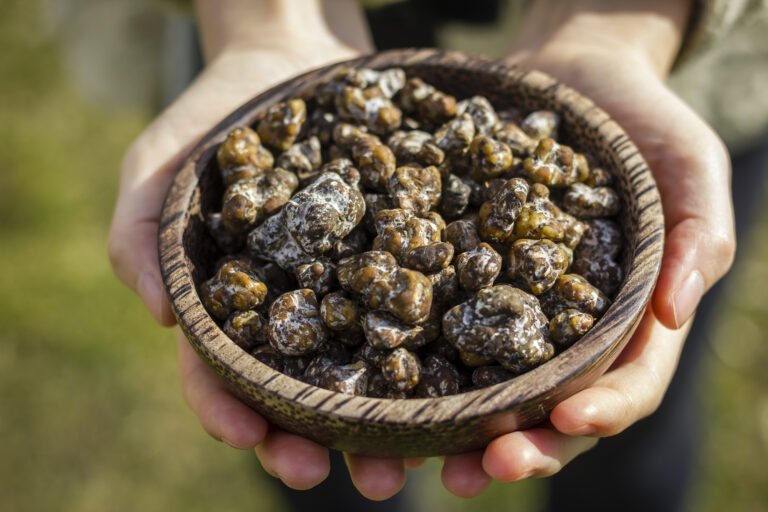Welcome to day 13, PSYJuly! Today’s post is from Sasha T. Sisko exploring the world of underground therapy…
.
Imagine a world where you’re recovering from surgery, praying that your doctor will give you optimistic news about your cancer prognosis. Instead, you’re told that your tumor is more advanced than previously thought. They inform you that your time left with loved ones is limited. While attempting to console you, they remind you that there are many options for people in your situation, but nothing can seem to penetrate the inescapable dread that comes with that terminal diagnosis. Stories like these are all too common.
You quickly realize that most of the treatment options afforded by modern medicine focus more on prolonging the number of days you have left, but not their quality. After months of dealing with feelings of demoralization, powerlessness, denial, isolation, and loss of connection, you approach your doctor hoping to find relief from your emotional pain. They tell you how the available pharmaceuticals will come with side-effects, but they can’t speak with certainty about whether these medicines will work for you.
After beginning the medication regimen, you still feel disconnected from the ones you love and the world around you. Your hastened desire to die, you realize, isn’t lessened by the fact that your oncologist, like most of their colleagues, did not inquire about your spiritual needs. You realize that connecting with some faith system can potentially ease your suffering, but you feel more lost than ever. Such solutions, you think, are impractical and not enough to overcome your listlessness.
Thoughts about death fill your every-waking moment and you begin to worry about your ability to die in peace with dignity. All you wish for is a temporary respite from your anxiety and depression so that you can cherish the last weeks and months you have left with family and friends. Above all, your life depends on finding a solution. Then someone tells you about psilocybin — your whole world changes and a glimmer of hope appears.
A Glimmer of Hope
Over the past two decades, nation-wide research has been conducted to investigate the clinical potential of psilocybin — the active compound within so-called ‘magic mushrooms’. Simply put, an international coalition of scientists has agreed that psilocybin-assisted psychotherapy displays groundbreaking potential in effectively combatting a variety of treatment- resistant mental illnesses including substance use disorder, PTSD, depression, and even cancer- related distress (Grob et al., 2011; Ross et al., 2016; Griffiths et al., 2016). Though this clinical psilocybin research has produced promising results, the USA is still years away from FDA approval.
Psilocybin allows people to experience a profoundly mystical sense of connection with their inner self and the world around them. In a 2012 interview with New York Times Magazine, Dr. John Halpern described these experiences as an epiphany that “there is a dazzling unity you belong to, that love is possible and all these realizations are imbued with deep meaning” (Slater, 2012). After such experiences, the fear associated with death is greatly diminished and often replaced by an undeniable truth that we are gifted with the present moment — that everyone has the ability to cherish what Terence McKenna called “the felt presence of immediate experience”.
Johns Hopkins recently reported that psilocybin-mediated psychotherapy elicits profoundly uplifting long-term effects for many patient populations, including those with terminal cancer diagnoses. In their 2016 paper, Dr. Roland Griffiths and colleagues indicated that more than eighty percent of several dozen cancer participants “endors[ed] moderately or higher increased well-being or life satisfaction” after their psilocybin session. At the six-month follow-up, 67.4% of cancer patients rated the experience as one of the “top five most meaningful of [their] life” while 69.6% described the experience as being among the “top five most spiritually significant of [their] life” (Griffiths et al.,2016).
Another study conducted by Drs. Stephen Ross and Anthony Bossis involving cancer patients found that psilocybin generated significant decreases in “demoralization and hopelessness, improved spiritual wellbeing, and increased quality of life” (Ross et al., 2016). Given that palliative care aims to improve quality of life, psilocybin has become a feasible option for those seeking relief from cancer-related distress.
For cancer survivors currently seeking psilocybin therapy, it’s a difficult road to walk down. Only a handful of certified medical practitioners are capable of administering psilocybin within safe and supportive settings — widely considered to be the only ‘legal’ way.
Given that most of these clinical studies only recruit participants who live within the immediate area (for preparatory sessions and long-term follow-up), there exists a substantial lack of access to psilocybin for those suffering from cancer. Even worse, it will be years before the FDA approves the use of psilocybin for end-of-life distress — a length of time that many people don’t have left.
Amid these clinical trials, one Seattle palliative care physician is suing the DEA after the agency denied his request to treat terminally-ill patients with synthetic psilocybin under the ‘Right to Try Act’. Though psilocybin meets the eligibility criteria for investigational medications, the DEA cited psilocybin’s status as a Schedule I compound when denying Dr. Aggarwal’s request.
In response, he filed a civil suit with the 9th District Court of Appeals to overturn the DEA’s ruling. In a surprising twist of fate, eight separate state attorney generals filed an amicus brief with the 9th District Court urging those judges to side in favor of Dr. Aggarwal. Though another forty states have ‘Right to Try’ laws, the DEA has made it clear that they have zero tolerance for those who do not ‘play by the books’.
The Current State of Affairs
This year in the US, nearly two million cancer patients will be diagnosed and over 600,000 Americans will lose their lives to this insidious disease (Siegel et al., 2021). Based on data from 2016 to 2018, approximately 39% of Americans will be diagnosed with some form of cancer at some point within their lives (SEER, 2021).
Compared to the general population, cancer survivors currently face a four-fold risk of suicide (Zaorsky et al., 2020). Deficits of spiritual well-being within cancer patients are significantly correlated with hastened desire for death, hopelessness, and suicidal thoughts (McClain et al., 2003). Such forms of psychological distress are also associated with lower compliance of pharmaceutical regimens, quality of life, and social function — a situation that no cancer survivor should withstand.
At the present day, several meta-analyses have failed to properly demonstrate that prescription antidepressants are more effective at treating cancer-related distress than a simple placebo. Dr. Giovanni Ostuzzi and colleagues concluded in a 2018 Cochrane article that there presently exists “an urgent need for large, simple, randomized, pragmatic trials comparing commonly used antidepressants versus placebo in people with cancer who have depressive symptoms” (Ostuzzi et al., 2018). Given the lack of effective therapies for depression within the medical sphere, millions of cancer survivors are desperately seeking a solution.
Enter the Underground
Between cancer patients’ substantial lack of access to effective forms of psychotherapy and their strong desire to find healing, many have turned to ‘underground’ psychedelic therapists who are willing to acquire and administer psilocybin mushrooms within the container of a therapeutic and supportive setting.
Given the lack of regulation within this field, concerns have been raised about this community of therapists. Despite these concerns, cancer patients will continue to seek out underground therapists, whoever they may be. This will certainly continue at least until the FDA approves psilocybin for end-of-life distress. During the course of writing this article, I was approached by two separate people asking whether I know a ‘psychedelic death doula’.
Numerous above-ground educational facilities offer training within the burgeoning field of psychedelic psychiatry. While many have attended Janice Phelps’ ongoing training program at California Institute of Integral Studies, other psychotherapists have undergone training while studying under names like Roland Griffiths, Rick Doblin, and Stanislav Grof.
While it is true that thousands of qualified, compassionate therapists operate within these underground circles, no sort of accreditation is necessary to enter this unregulated domain. Even worse, there are some unethical actors within the underground — some of whom are predators seeking monetary gain or the thrills associated with positions of power (Liana, 2020). Without naming names, coverage of an esteemed Oregonian practitioner raised serious questions about the underground field of therapists (Psymposia, 2021).
Underground Elicits Mixed Opinions
Dr. Robert Meisner, a psychiatrist at Massachusetts General Hospital’s Emergency Department and a medical director at McLean Hospital, told the Wall Street Journal back in March that he was “concerned” about “well-intentioned patients” who are searching for “treatment from unregulated sources”, especially if they don’t fully understand the pharmacological “profile” of psilocybin (Cooper, 2021).
Three months ago, Dr. Eric Sienknecht gave an educational web-based presentation on psychedelic-assisted psychotherapy for Mt. Tam Integration, a support-centered network for psychedelic advocates. Near the end, the clinical psychologist was posed a question about the underground community. One anonymous participant noted that there are presently plenty of “people out there that would like to be a guide for others and try and maybe become that kind of trip sitter […] where would you recommend people start and is it even a financially viable pursuit?”
Himself a clinical psychologist, Dr. Sienknecht responded that “Yea […] I think it is a financially viable pursuit and more and more so as time goes on and as public perception shifts”. Hesitating, he told those attending the webinar that “there’s training available” for above- ground and underground practitioners and that he is a “firm believer in the importance of getting good training” and “ethical engagement with the work”. With a nervous smile, Dr. Sienknecht informed eager listeners that he had “no comment on the underground training” and that was unwilling to provide “any information” about the underground.
In late June, Vermont-based clinicians gathered for the inaugural meeting of the Psychedelic Society of Vermont (PSOV) — a coalition of dozens of care-givers seeking quality educational content about psychedelic-assisted psychotherapy. While answering a question
about the legality of this novel form of therapy, Dr. Rick Barnett, an addiction specialist and co- founder of PSOV, commented on the growing number of underground practitioners.
Without giving endorsement to these unregulated practitioners, Dr. Barnett indicated that some within the underground “certainly know what they’re doing” while others “probably don’t”. Giving a stern warning to the clinicians attending, Dr. Barnett advised that those who interact with underground practitioners do so “at their own risk” given the illegality of the practice.
By way of contrast, others are less concerned and see underground therapists as “heroes of conscience who risked their necks to give medicine [where] no one else would” (Capps, 2021). Despite state and federal laws prohibiting this practice, underground therapists are compassionately assisting an under-served community. These care-givers feel morally compelled to act on their expertise even though they actively risk their lives and freedom to do so. Driven to help those who have been failed by modern medicine, underground therapists understand that psilocybin has been utilized for millennia as a medicine and, indeed, a sacrament.
A History of Evidence
After Robert Gordon Wasson’s 1957 article in Life Magazine introduced psilocybin to the western world, a flurry of scientists began to investigate the novel substance’s clinical potential. Though there were excellent studies indicating the mushroomic alkaloid was effective at combatting a wide variety of treatment-resistant mental illnesses, the first person to suggest that psilocybin had potential for cancer patients was Dr. Valentina Wasson, Robert Gordon’s wife.
Like her husband, Valentina consumed psilocybin mushrooms while in Oaxaca — a tale described in a May 1957 article in This Week, a nationally-syndicated newspaper supplement. Without disclosing the fact that she was suffering from cancer, Valentina remarked within her article that once scientific research began on psilocybin, it would inevitably “become a vital tool in the study of psychic processes” including “treating terminal illnesses accompanied by acute pain and in mental diseases”. The following year, Valentina’s life was cut short, but her memory lives on (Bartlett & Williams, 2021).
Thousands of years before Robert and Valentina Wasson explored Oaxaca in search of the ‘sacred mushroom’, the indigenous people of Central America heralded psilocybin mushrooms for their inherent medicinal qualities and their theophanic potential to induce mystical states of consciousness placing people in direct communication with the divine.
To this very day, indigenous Mazatec practitioners consider psilocybin mushrooms to be both a medicine and a sacrament of their syncretic Christian faith. Doña María Sabina, the esteemed Oaxacan curandera who introduced the Wassons to the ‘Little Saints’, was but one person in a long line of indigenous healers who utilized psilocybin mushrooms alongside other plant medicines in order to heal the sick.
Flashing forward to the present day, the Johns Hopkins Center for Psychedelic Research has become the epicenter of psychedelic research. After over two decades of rigorous, double- blind, placebo-controlled studies, Hopkins has aptly demonstrated (Davis et al., 2020) that psilocybin-assisted psychotherapy is more than four times as effective as antidepressant medications (Fournier et al., 2010) and approximately two-and-a-half times as effective as therapist-assisted cognitive behavioral therapy (Rubin et al., 2017).
Though psilocybin has been considered a Schedule I drug for over five decades, an international consensus of medical professionals has agreed that its placement alongside heroin and freebase cocaine is highly unwarranted. Several rigorous studies have provided robust evidence regarding the low harm potential of psilocybin relative to actual drugs of abuse. In the late 2000s, Dr. David Nutt of Imperial College of London gathered with the Independent Scientific Committee on Drugs to utilize a more extensive decision-making approach to determine the individual harms of various drugs and their effects on society. Utilizing sixteen criteria to weigh the relative harms of twenty drugs, alcohol was found to be the most harmful substance with an overall harm score of 72 out of a possible 80. Remarkably, the study’s lowest overall score (6/80) was attributed to Psilocybe mushrooms (Nutt et al., 2010).
Five years later, Dr. Jan van Amsterdam gathered forty European addiction experts to score the harms of twenty different drugs in terms of sixteen different factors (van Amsterdam et al., 2015). The comprehensive study found that the lowest rate of individual and social harms was, once again, attributed to psilocybin mushrooms.
Though psilocybin seems to display a remarkably safe track record, not everyone is able to physically tolerate the mushroomic alkaloid. In order to demystify this important matter, I journeyed into the underground only to find a mixed bag of CIIS-trained clinicians, indigenous people carrying many generations of teachings, self-taught medical students, white people posing as ‘shamans’, and those who openly sell psilocybin mushrooms on the ‘dark web’. Among these figures hiding in the shadows, I found ‘Raymond’.
Advice from ‘Raymond’
After searching through troves of underground practitioners advertising their services on Twitter, Facebook, Instagram, and TikTok, I stumbled upon an oncologist who is up-to-date on the ongoing psilocybin research. As a clinician who specializes in end-of-life care and finished their clinical postdoc research at the Texas MD Anderson Cancer Center, I knew that ‘Raymond’ was more than qualified.
Raymond claims to be very “burnt out” from his job given that there is so much “internal corruption” and greed within the medical & insurance industries. In fact, Raymond would, according to my source, “regularly” face punishment from his superiors “for spending too much time with patients who were clearly dying when he could be billing other patients for simpler procedures”. After hearing this, I knew that he was the person I wanted to speak with.
After a lengthy family sabbatical, Raymond finally returned my emails. Pouring over his words, I could tell how concerned he was to potentially be outed for participating in this interview. Speaking in precise terms, Raymond simultaneously expressed his qualms with the current landscape within the field of cancer care, the drug propaganda that has poisoned the minds of clinicians across the globe, and the relative lack of awareness about psilocybin by oncologists.
Raymond shared his “impression” that there is a substantive lack of “general awareness within the field of oncology” about psilocybin-assisted psychotherapy. Clarifying his remark, he informed me that while he was in graduate school, “little distinction” was given to the vast differences between psilocybin, cannabis, cocaine, methamphetamine, and heroin. Raymond conceded that these “wildly different substances” continue to be “broadly labeled as ‘drugs of abuse’ in mainstream allopathic medicine”.
Though Raymond was clearly distraught about so much within his field, he expressed the common sentiment that Johns Hopkins, the Multidisciplinary Association for Psychedelic Studies, and Michael Pollan’s 2018 bestseller How to Change Your Mind have all generated “stunningly swift progress in shifting the paradigm for the therapeutic roles of psychedelics”.
When I asked if he wanted to speak directly to cancer patients desperately seeking psilocybin-assisted psychotherapy, he advised that they should “see if any clinical trials were suitable and enrolling”. After investigating the government’s website for clinical trials (ClinicalTrials.gov), I could only find one study in Maryland currently enrolling cancer patients. Given the substantive lack of access to psilocybin therapy, the numerous states and cities that have passed decriminalization measures, and the growing field of underground therapists, Raymond asserted that the “legal aspects” related to the underground community “warrant[s] explicit discussion”.
While it is true that lack of medical access to psilocybin has led many distressed cancer patients to seek underground therapists, Raymond claimed that the substantive lack of access to this effective form of therapy “represents one of the least egregious injustices committed by the structurally-violent corporate American healthcare system”.
Providing evidence for his claims, Raymond noted that cancer patients and their families are suffering from overly-burdensome medical bills, frontline healthcare workers are facing wide-spread furloughs and layoffs, and oncologists are dealing with higher rates of depression and suicide (McFarland et al., 2019) — facts which became severely apparent after the COVID pandemic began.
For psilocybin-assisted psychotherapy to “reach its full potential”, Raymond remarked that society needs to initiate “meaningful healthcare reform” while eliminating the “stigma” associated with mental health issues within both the medical sphere and the general population.
He also made it clear that certain cancer patients should not be seeking psilocybin therapy whether it is facilitated by an above-ground facilitator or otherwise. Among other known exclusion criteria, Ray sternly advised that psychedelic therapists should be extremely cautious when considering administering psilocybin to cancer patients with grade 3-4 elevation in Liver Function Tests, those with brain tumors, and those who are currently taking MAOIs, antidepressants, or dexamethasone. The risks? Ray pointed out that ignoring these exclusion criteria could result in patients experiencing stroke, seizure, serotonin syndrome, or acute anxiety attack — each of which has the potential to severely impact the quality of life of these cancer patients.
Raymond concluded his email by remarking that oncologists are overburdened by their work and the emotional toll of watching their patients die. He lamented that doctors often delay discussions about cancer prognoses “until the 59th minute of the 11th hour” given that “oncology providers frequently get caught in between the unrealistic expectations of patients/families and the corporate system applying endless pressure to achieve assembly line efficiency”.
Speaking from his experience, Raymond asserted that those oncologists who make effort to fully discuss treatment options with their patients while providing adequate documentation “easily end up working up to 100 hours a week”. Given these “perfect storm conditions”, Raymond wished to make it clear that many cancer patients “delay” seeking psilocybin therapy “because they don’t realize how near they are to the end of life” — a fact which reiterates the dire need to reform the systemic dysfunction present throughout the healthcare industry.
Final Words
Though it will be years before the FDA finally approves psilocybin for use within clinics, underground practitioners are satisfying the needs of those who simply wish to find peace in their final weeks and months. Many clutch their pearls at the thought of an unregulated market of therapists, but I wish to remind them that the true risks of psilocybin stem from how the medicine is handled, not the medicine itself. Those who wish to carry the psychedelic torch must utilize psilocybin ethically, wisely, cautiously, and with complete respect for its intended purpose: healing. If one cannot abide by these principles, the underground community will do their best to find these unethical actors and cast them out of their tightly-knit community of care-givers.
In an effort to offer all that I can, I will leave some final remarks for those who are currently struggling with suicidal ideation and cancer-related existential distress. As someone who has personally dealt with suicidal thoughts, I understand that words of wisdom and compassion rarely penetrate the sorrow that comes with clinical depression. With that in mind, I will share what the ‘Little Saints’ have taught me.
Though your heart has suffered the slings and arrows of outrageous fortune, you are not alone in the world. Do not fear, for there is boundless depth and joy already present within your life. Arm yourself with the knowledge that our world contains unfathomably complex beauty. Take time every single day to simply witness the splendor within everyday life. Love ceaselessly and celebrate this opportunity to be alive, aware, and breathing. Embrace what life still has in store for you — choose not to live behind a self-erected wall which keeps you disconnected from the world around you. Instead, live each day alive in the world and continue to move forward despite the fear and pain that you feel is controlling your life.
“He who kisses the joy as it flies / Lives in eternity’s sunrise”- William Blake
To this end, Wyly Gray, a United States Marine and founder of the non-profit organization Veterans of War, often shares a profoundly moving axiom with those who cross his path. As someone who overcame suicidal thoughts and post-traumatic stress by drinking Ayahuasca in Peru, he enjoys reminding others that inner peace and joy comes from “pushing through the darkness into the light”.
The light, I submit, is the intentional choice to cherish the “felt presence of immediate experience”. May we all be blessed by that light within eternity’s sunrise.
.
.
Works Cited
Bartlett, A., & Williams, M. (2020, November 30). The Cost of Omission: Dr. Valentina Wasson and Getting Our Stories Right. Chacruna. https://chacruna.net/dr-valentina-wasson-and-getting-our-stories-right/
Cancer of Any Site – Cancer Stat Facts. SEER. (2012, August 29). https://seer.cancer.gov/statfacts/html/all.html.
Capps, R. (2021, May 5). A Song for the Underground Psychedelic Psychotherapist. Chacruna. https://chacruna.net/a-song-for-the- underground-psychedelic-psychotherapist/.
Cooper, L. (2021, March 10). Could Group Therapy Get a Boost From Psychedelics? The Wall Street Journal. https://www.wsj.com/articles/could-group-therapy-get-a-boost-from-psychedelics-11615395614
Davis, A. K., Barrett, F. S., May, D. G., Cosimano, M. P., Sepeda, N. D., Johnson, M. W., Finan, P. H., & Griffiths, R. R. (2021). Effects of Psilocybin-Assisted Therapy on Major Depressive Disorder: A Randomized Clinical Trial. JAMA Psychiatry, 78(5), 481–489. https://doi.org/10.1001/jamapsychiatry.2020.3285
Fournier, J. C., DeRubeis, R. J., Hollon, S. D., Dimidjian, S., Amsterdam, J. D., Shelton, R. C., & Fawcett, J. (2010). Antidepressant drug effects and depression severity: a patient-level meta-analysis. JAMA, 303(1), 47–53. https://doi.org/10.1001/jama.2009.1943
Griffiths, R. R., Johnson, M. W., Carducci, M. A., Umbricht, A., Richards, W. A., Richards, B. D., Cosimano, M. P., & Klinedinst, M. A. (2016). Psilocybin produces substantial and sustained decreases in depression and anxiety in patients with life-threatening cancer: A randomized double-blind trial. Journal of psychopharmacology (Oxford, England), 30(12), 1181– 1197. https://doi.org/10.1177/0269881116675513
Grob, C. S., Danforth, A. L., Chopra, G. S., Hagerty, M., McKay, C. R., Halberstadt, A. L., & Greer, G. R. (2011). Pilot study of psilocybin treatment for anxiety in patients with advanced-stage cancer. Archives of general psychiatry, 68(1), 71–78. https://doi.org/10.1001/archgenpsychiatry.2010.116
Hasler, F., Grimberg, U., Benz, M. A., Huber, T., & Vollenweider, F. X. (2004). Acute psychological and physiological effects of psilocybin in healthy humans: a double-blind, placebo-controlled dose-effect study. Psychopharmacology, 172(2), 145–156. https://doi.org/10.1007/s00213-003-1640-6
Liana, L. (2020, May 19). Bufo Deaths & Fraud Involving Toad “Shamans” Octavio Rettig & Gerry Sandoval. EntheoNation. https://entheonation.com/blog/death-fraud-octavio-rettig-gerry-sandoval/
McClain, C. S., Rosenfeld, B., & Breitbart, W. (2003). Effect of spiritual well-being on end-of-life despair in terminally-ill cancer patients. Lancet (London, England), 361(9369), 1603–1607. https://pubmed.ncbi.nlm.nih.gov/12747880/
Nutt, D.J., King, L.A., Phillips, L.D. (2010). Independent Scientific Committee on Drug harms in the UK: a multicriteria decision analysis. Lancet (London, England), 376: 1558-1565 Ostuzzi, G., Matcham, F., Dauchy, S., Barbui, C., & Hotopf, M. (2015). Antidepressants for the treatment of depression in people with cancer. The Cochrane database of systematic reviews, 2015(6), CD011006. https://www.cochranelibrary.com/cdsr/doi/10.1002/14651858.CD011006.pub3/full
Psymposia. (2021, March 18). #32 – It’s All Red Flags: 5-MeO-DMT with Dr. Martin Ball. https://www.psymposia.com/podcasts/32-its-all-red-flags-5-meo-dmt-with-dr-martin-ball/
McFarland, D.C., Hlubocky, F., Susaimanickam, B., O’Hanlon, R., Riba, M. (May2019). Addressing Depression, Burnout, and Suicide in Oncology Physicians. American Society of Clinical Oncology Educational Book. 39, 590-598. DOI: 10.1200/EDBK_239087
Ross, S., Bossis, A., Guss, J., Agin-Liebes, G., Malone, T., Cohen, B., Mennenga, S. E., Belser, A., Kalliontzi, K., Babb, J., Su, Z., Corby, P., & Schmidt, B. L. (2016). Rapid and sustained symptom reduction following psilocybin treatment for anxiety and depression in patients with life-threatening cancer: a randomized controlled trial. Journal of psychopharmacology (Oxford, England), 30(12), 1165–1180. https://doi.org/10.1177/0269881116675512
Rubin, A., Yu, M. (2017). Within-Group Effect Size Benchmarks for Cognitive– Behavioral Therapy in the Treatment of Adult Depression. Social Work Research. 41(3):135-144. https://academic.oup.com/swr/article-abstract/41/3/135/3979362
Siegel, R. L., Miller, K. D., Fuchs, H. E., & Jemal, A. (2021). Cancer Statistics, 2021. CA: a cancer journal for clinicians, 71(1), 7–33. https://doi.org/10.3322/caac.21654
Slater, L. (2012, April 24). How Psychedelic Drugs Can Help Patients Face Death. The New York Times. https://www.nytimes.com/2012/04/22/magazine/how-psychedelic-drugs-can-help-patients-face-death.html
Tucker, K. (2021, May 21). Amici Curiae Supporting Case Seeking to Compel DEA to Allow Access to Psilocybin Therapy for Seriously Ill Patients. Emerge Law Group. https://emergelawgroup.com/2017/amici-curiae-supporting-case-seeking-to-compel-dea-to-allow-access-to-psilocybin-therapy-for-seriously-ill-patients/
van Amsterdam, J., Nutt, D., Phillips, L., & van den Brink, W. (2015). European rating of drug harms. Journal of psychopharmacology (Oxford, England), 29(6), 655–660. https://doi.org/10.1177/0269881115581980
Zaorsky, N. G., Zhang, Y., Tuanquin, L., Bluethmann, S. M., Park, H. S., & Chinchilli, V. M. (2019). Suicide among cancer patients. Nature communications, 10(1), 207. https://doi.org/10.1038/s41467-018-08170-1

